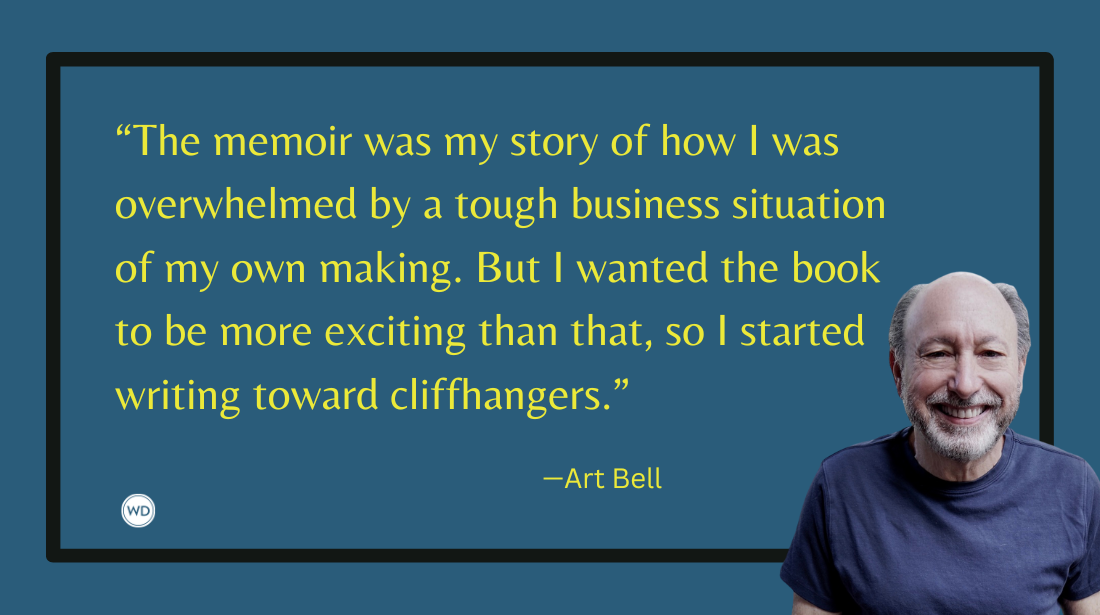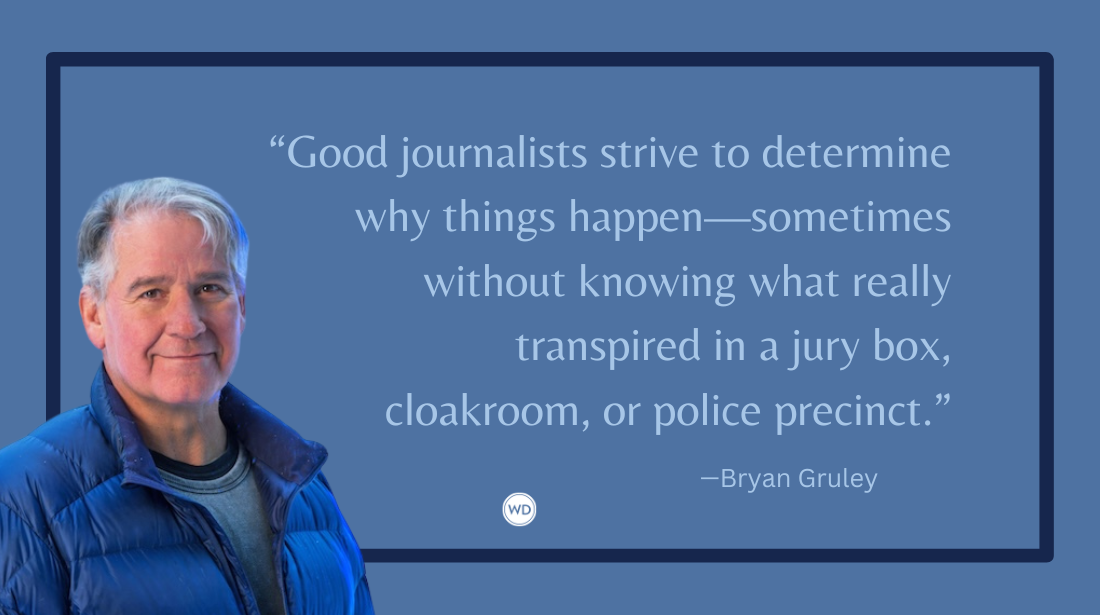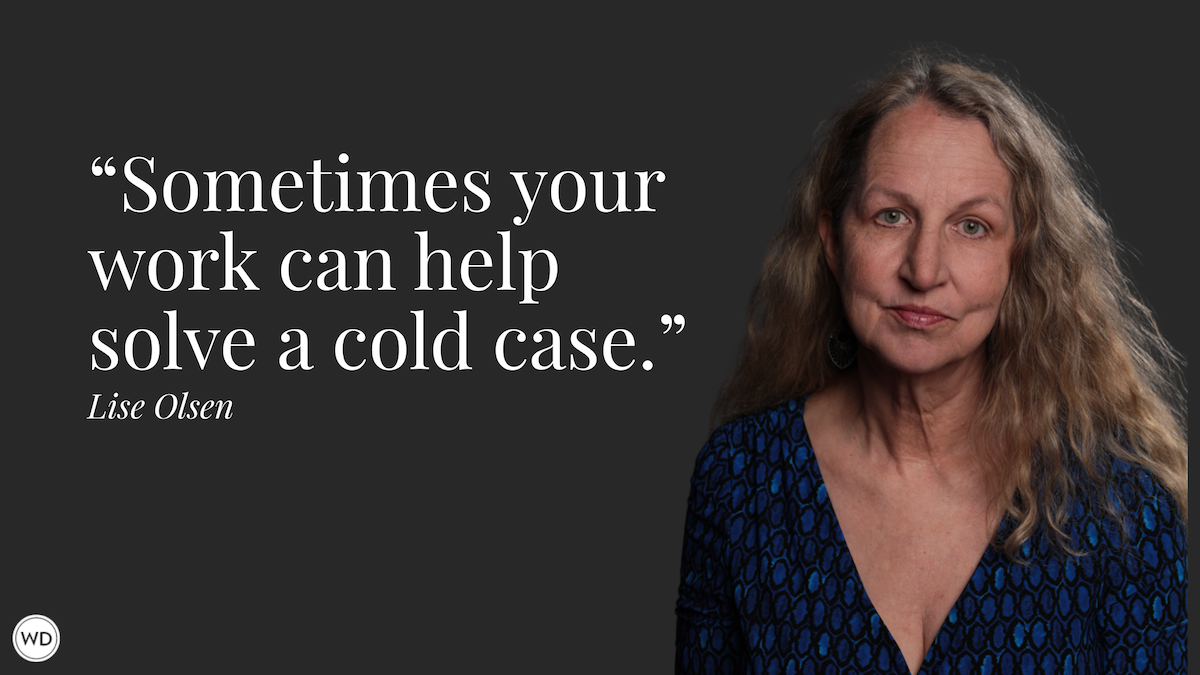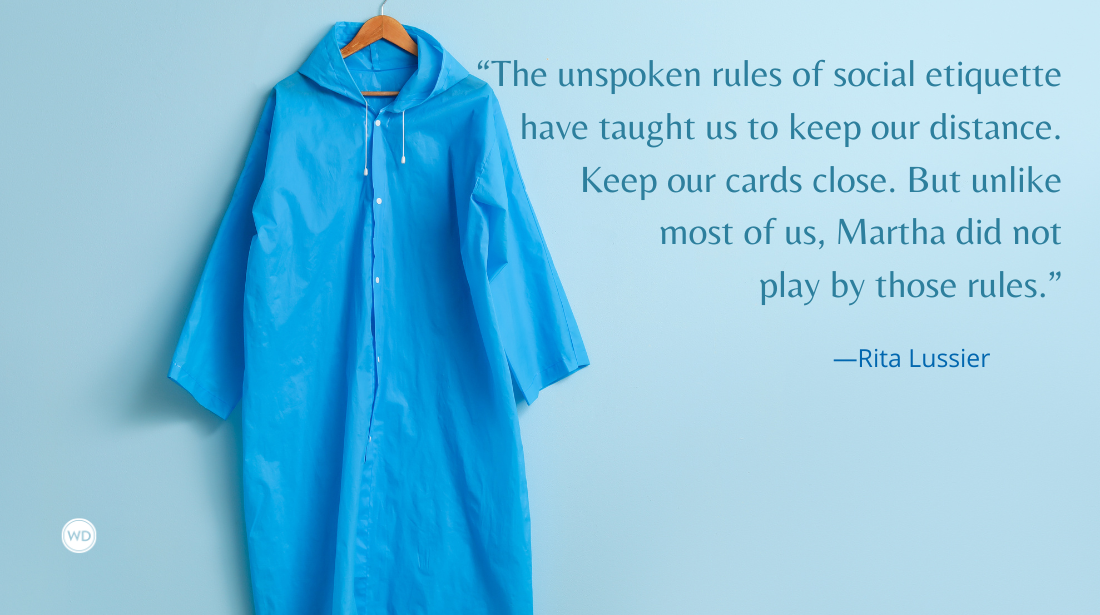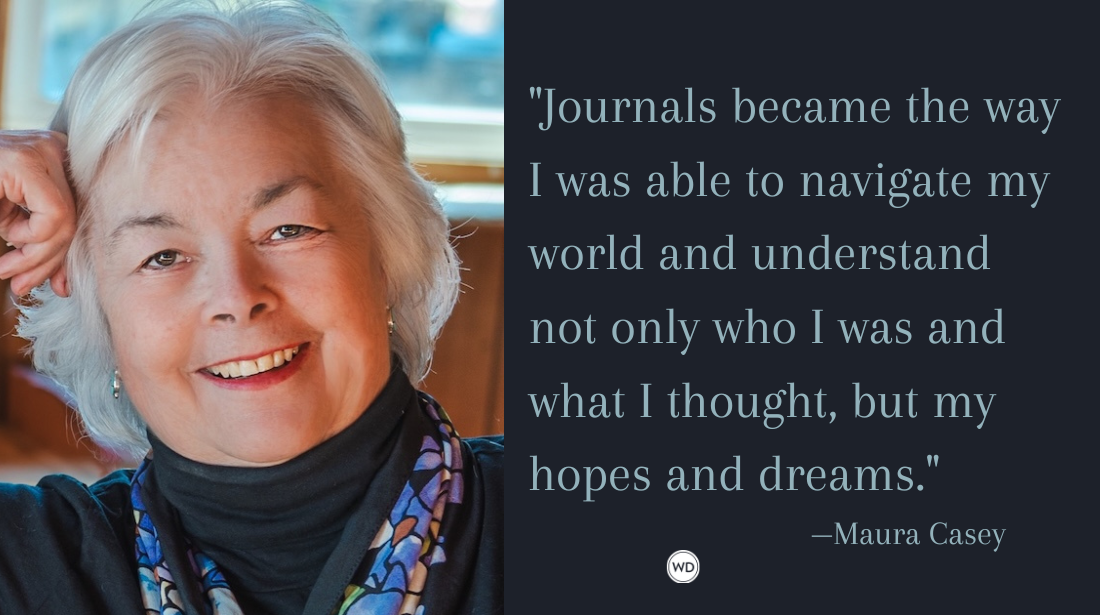Your Own Worst Enemy: Writing Villains in Memoir
Writing villains in memoir takes a special kind of honesty. In this feature from the July/August 2019 issue of Writer’s Digest, William Kenower offers his take.
Writing villains in memoir takes a special kind of honesty. In this feature from the July/August 2019 issue of Writer's Digest, William Kenower offers his take on the challenging task.
There are no villains in memoir—unless you count yourself. Understand the ways in which you act as a character so you can tell your story as its writer.
When I began writing memoir, I was surprised to find how much these true stories needed to read like novels or short stories told in the first person. Just like fiction, there need to be scenes with action and dialogue. Settings have to be vividly rendered with concrete, physical details. There also has to be a clear storyline with an inciting action, rising conflict and a satisfying conclusion, complete with some meaningful change occurring within the protagonist.
What there cannot be, however, are villains. There are no villains in memoir.
To be clear, memoirs, like life, are often filled with characters doing villainous things. There are cheating spouses, alcoholic parents, schoolyard bullies and predatory priests. I worked with a client whose father murdered her mother, and another who escaped the thrall of a religious cult. The world is filled with people doing awful things to other people, and the ones who survive those awful things often want to tell their stories. Sometimes they must tell their stories just to make sense of their lives. Most of the stories we read or watch in books and movies have had villains. Surely our stories can as well.
Yet ours can’t, and to understand why, let’s look at a traditional fictional villain: the killer in a murder mystery. The hero in a mystery, whether a detective or an amateur sleuth, always answers two questions. First, they must find out whodunit. In a good mystery, there are always many suspects, and the majority of the story is spent watching the hero sift through clues until he or she has homed in on The One. Then comes the second, and more important question: Why? Why did the killer kill? What was their motivation?
In truth, no good mystery is merely a whodunit. It is always a “why did someone do it?” As terrible as murder may be, the mere fact that someone killed someone else is not all that compelling. Why someone killed someone else is. The killer’s motivation is what drives the entire story and what makes them a true villain. It is their motivation that gives purpose to their actions.
This is precisely why there are no villains in memoir. In real life, the only thing we know for sure is what we see and hear, and what we think and believe. When a memoirist depicts a scene in which something happens involving anyone besides him- or herself, no matter how joyous or violent, no matter how wanted or unwanted, the rules are always the same. The writer should always describe as vividly as possible what was said and done. If your father threw a whisky bottle at your head, show that bottle flying through the air and shattering against the wall. If he called you names, he should call you those names on the page. And if you thought He’scrazy and wants to kill me, let the reader know you thought that. Or, if you thought He hates meand has always hated me, let the reader know that too.
The line the author cannot cross, what the author cannot show, is what another person thought or what motivated another person. No matter how certain we might be that we know what someone is thinking, we are wrong. Thoughts come to us constantly like a river always flowing. Sometimes those thoughts even contradict themselves: She loves me; she wants to leave me. I want to stay here; I want to leave right now. A mind can change and change and change again. It’s hard enough to keep up with your own mind; it is impossible to follow another’s.
That said, it’s relatively easy to avoid falling into the trap of showing other people’s thoughts—the memoirist is writing in the first person, after all. It’s a little more complicated with motivation. We assign motivation to each other all the time. We say, “He doesn’t love me,” or, “She doesn’t care about anyone but herself,” or, “He has to be right all the time.” I usually do this to try to make sense of something that doesn’t make sense to me. I become a little like a detective, solving the mystery of why someone would do something that seems unkind, selfish or destructive. Though I’m a pretty intuitive guy and consider myself a good judge of other people, my answer never satisfies me completely. I always feel some missing piece, some other, conflicting motivation that makes that person as complicated and nuanced and whole as I.
Thus, while my character in a memoir might think My brother doesn’t really like me, I, as the author, can’t begin a story, My brother never really liked me. I don’t actually know that. All I know is that I felt like he didn’t like me, or that I decided he didn’t like me. The distinction may seem subtle, but it is actually the difference between telling my story and telling someoneelse’s story. As soon as I start assigning motivation, I’m telling another person’s story, and that is not mine to tell.
The challenge is that in fiction, the villain is often the source of the story’s problem. Without a killer, the hero would have no mystery to solve. Every story, whether true or fictional, must have conflicts, must have obstacles, and this is true of memoir as well. I just have to turn my attention inward to find that villain, that source of the problem.
I must become a kind of detective of my own life—specifically my own actions and motivations. Let’s say I am writing about a difficult, year-long relationship I had when I was 20. I know for a fact that I was never excited to be in the relationship, that on the first date with this young woman I sensed that, while she was perfectly nice and attractive and bright, we were not a great fit. Yet I entered into that relationship anyway, and for 12 months rode the rollercoaster of arguments and confusion and accusations and tears. I was rarely happy in this relationship, that is also a fact. I also couldn’t bring myself to end it. That’s another fact. It wasn’t until she confessed she was sleeping with someone else that I finally felt free to leave.
Those are the facts. I already know them. As a writer, I am always looking to discover something in the stories I tell. And so, the question I’d ask myself again and again as I told this story is Why?. Why did I go on a second and then third date? Why did I think it was good idea to move in together? Why did I stop writing as soon as we started dating? Why did I need her to cheat on me to end it? Just like a fictional detective, I am looking for motivation, except the motivation I am trying to understand is my own.
In this way, I am always the villain of my own story. I always write about my own suffering, discomfort, unhappiness and fear. The character named Bill Kenower on the page often blames the world for his problems. He blames his girlfriend’s unhappiness for his unhappiness, the publishing world for his rejections. Like many criminals, he always believes he’s innocent. It’s those other people who are guilty. If only they’d quit doing what they’re doing, he’d be fine.
Bill the Author knows better. He knows, first, that Bill the Character never wants to be afraid, depressed or angry. He knows the character always wants to be interested, happy and peaceful. That never, ever changes. Bill the Author also knows that Bill the Character has many mistaken ideas about how to get what he wants, about where happiness and love and peace can and can’t be found. He knows Bill the Character looks for what he wants where it isn’t, that he looks for it in sex, success, money, praise or drugs and alcohol.
Bill the Author doesn’t mind this because he loves a good story, and there’s nothing like the suffering those misguided journeys engender to give a story its meaning and energy. Bill the Character is a sympathetic protagonist. He’s looking for something we all want, isn’t he? He just wants to be happy, to be OK. Poor guy. If only he knew better. Fortunately, he doesn’t know better. If he did, there’d be no story to tell.
Unlike the villains in fiction, Bill the Character is always both guilty and innocent. He is guilty of believing something that isn’t true, of believing that he needs to stay in a relationship that doesn’t engage him, that he should stop writing because his girlfriend needs all of his attention, that good sex is enough of a reason to hang around with someone. He’s guilty of all these crimes of misunderstanding, and his sentence of suffering will last exactly as long as he continues to believe them.
To write a memoir in this way requires the author to take complete responsibility for their lives. I do not mean I am taking responsibility for everything that happens. I have very little, if any, control over what other people do, let alone the weather or stock market. But I do have control over how I respond to what happens, including what I think and believe about the world around me. I have known no greater pain than when I have thought I’m a failure, or I’m a loser or I’m lost. When I think I’m a loser, it’s like telling myself a story I would never want to hear. That the story is untrue doesn’t matter. As a writer, I’m great at believing stories that aren’t technically true. To write about dragons flying through magical kingdoms, I have to see and believe in those dragons in my imagination. I have to see them as clearly as the houses outside my window. If I can believe in those dragons, believing I’m a loser is easy.
The memoirist must retell a story. Our past is laden with lies we’ve told ourselves, lies about how we weren’t good enough, how someone never loved us or how the world is cruel and unfair. We tell the story, the lie, again and again and again like a campfire myth with no good ending. All we are left with at the end of these stories is our own formless suffering. The memoirist is drawn back to these old stories to tell them correctly, to find that moment when the untrue story began in our frightened or angry hearts.
Am I always taking complete responsibility for my life when I’m not writing? Sadly, I am often not. I forget the lessons writing taught me. I forget that every single time I think I’mdoomed or She doesn’t care about me, I’ll feel miserable or irritated as surely as fire burns paper. The good news is that all the untrue things I believe now become stories I can tell later. Someday, maybe soon, maybe in 10 years, I’ll be rummaging through my memory for a story, and there it will be, that pinprick of discomfort as I recall what was said and done once upon a time. I can’t remember exactly why I was unhappy, but I know I was, and so I don my detective’s cap, pull up to my desk, and go looking for the villain of a lie so I can be free again.
For more about memoir writing, check out this guest post by Karen Stefano about writing traumatic events.
Have personal experiences you want to share? WD University's Writing the Personal Essay 101: Fundamentals will teach you how to avoid the dreaded responses of "so what?" and "I guess you had to be there" by utilizing sensory details, learn to trust your writing intuitions, and develop a skilled internal editor to help with revision. Register today!
William Kenower is the editor-in-chief of Author magazine, a sought-after speaker and teacher, and the author of Fearless Writing (Writer's Digest Books). He’s been published in The New York Times and Edible Seattle, and was a featured blogger on HuffPost. His video interviews with hundreds of writers, from Nora Ephron to Amy Tan to William Gibson, are widely considered the best of their kind on the Internet. He also hosts the online radio program Author2Author, where every week he and a different guest discuss the books we write and the lives we lead.



